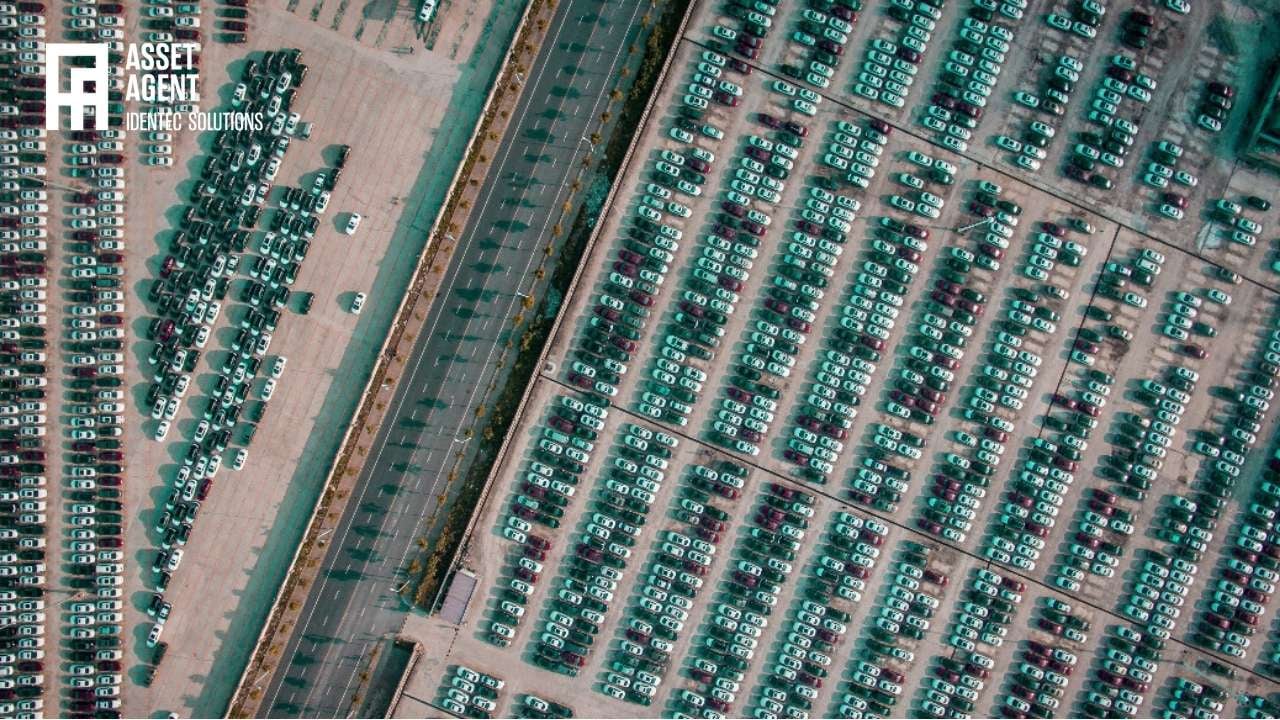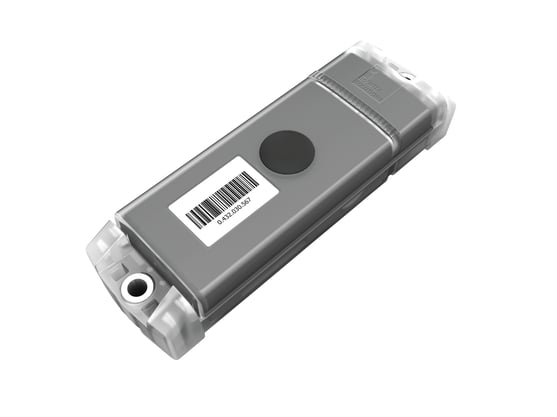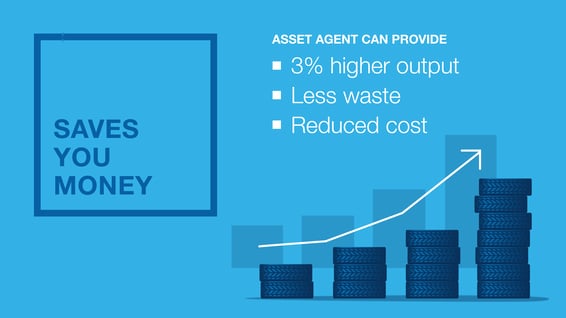Vehicle Yard Management Through Real-time Visibility
| Written by Christian Aadal
It’s like searching for a needle in a haystack. Car terminals are huge - sometimes with several thousands of cars parked, waiting to get serviced before finally being shipped to local dealers, it is a highly dynamic environment in continuous movement.

No video selected
Select a video type in the sidebar.
Modern car terminals offer a wide range of individual processes. This means they are developed to be full-service providers of the automotive market. Car remarketing, visual conditioning or special modifications are just a few of the offers, where nearly every vehicle runs through a different process.
Vehicle Yard Management Challenges
After a newly manufactured vehicle exits the production line, the logistical challenges transition to the domain of the parking area. This area, densely populated with numerous vehicles, necessitates a highly efficient management system to handle the complexities of such large-scale operations.
Key issues in managing this area include:
- Strategically assigning parking spots to maximize utilization and facilitate easier access and departure of vehicles.
- Difficulty in pinpointing a specific vehicle for removal, often resulting in extended search durations.
- Potential for minor vehicle damage, such as scratches and dents, due to unnecessary manoeuvring by drivers.
- The tendency for drivers to choose inefficient paths for parking leads to unnecessary time consumption and additional distance covered.
- At the same time, drivers often take random routes to reach a parked vehicle, which could be more efficient and increase productivity.
- There is a need for drivers to reposition multiple vehicles before they can extract the desired one from its spot.
- Drivers may take non-optimal routes when retrieving vehicles, causing delays and extra mileage.
- The arduous and time-consuming task of manually counting the vehicles.
Maintaining thorough oversight to pinpoint the underlying causes of these issues within the yard is crucial. Implementing an Internet of Things (IoT) based Real-Time Location System (RTLS) offers the potential to grant managers the level of observation and regulation previously seen in early adopters of intelligent manufacturing plants, storage facilities, and production lines.
The same is true for car logistics at the big export/import ports. To give you an example: The port of Zeebrugge has consistently ranked first in Europe for vehicle handling, with Antwerp typically among the top five. In 2021, Zeebrugge processed 2.26 million vehicles, while Antwerp moved 821,500 (a total of 3.08 million). For the 2022 calendar year, the port authority reported a combined handling of 3.26 million new passenger cars, a 5.7% increase year-on-year. This included up to a 15% year-on-year growth in electric vehicle volumes, a 13.2% rise in used car movements, and a 17% increase in commercial vehicles. High-and-heavy rolling stock also saw a 9.6% increase. In 2023, the combined ports have maintained this upward trend, with new vehicle handling reaching 905,000 units in the first quarter, a 7.2% increase compared to the same period in 2022 (1).

Manual processes still dominate the market
But what is the reality of big car manufacturers and dealers once cars leave the production lines? "Finished" cars always start the process when they are registered in the ERP/TOS of the factory. In most cases, this registration is done manually by scanning a printed label on the vehicle behind the windshield. The ERP/TOS then defines the optimal parking space to ensure an optimized routing for the following processes as it knows the current space occupation. The new position must be reported to the ERP/TOS every time the vehicle is moved to keep it accurate in almost real time. The same booking is required if a work order is finished. This is more than just time-consuming; it is also a manual process and a potential source of human errors.
Nearly every process step in the entire chain needs to be reported. It is challenging to ensure that these bookings are done correctly. Every wrong or missing booking leads to delays in the process flow. Besides the human factor, there are also environmental impacts, like rain, that can significantly reduce the reliability of bookings, at least temporarily. In addition, identifying the right car or parking spot in a snowy parking space can be tough, such as picking up the correct white car in a parking lot full of white cars.
The needs of modern automotive logistic suppliers
One of the most important KPIs for yard management is the annual throughput of cars. Terminal operators invest a lot to keep this figure high. To be competitive, there is no room for mistakes or wasting time. Therefore, stable and lean processes are a prerequisite to improving the throughput KPI. Modern technology can offer you the visibility needed to run your operations efficiently.
An RTLS-based solution helps locating vehicles and provides real added value to your yard management. Just imagine if you upgrade your existing planning system with a solution that:
- minimizes search/pick up times for parked cars
- proactively supports your staff to work much more reliably
- helps to avoid human errors
- automates business processes and eliminates bar code scanning
- can easily interact with your staff through visual feedback
- provides real-time documentation of every vehicle movement
- can easily be scaled to any required size, up to tens of thousands of vehicles
- identifies bottlenecks in the process
- optimizes resource utilization
14 Things to consider when implementing a Real Time Location System

Asset Agent, the smart portion of your assets
The centrepiece of Asset Agent is a multi-functional transponder that is temporarily positioned on every vehicle. When a car arrives at the yard, the transponder is hung onto the inside mirror, and the car gets associated with the transponder automatically. From this moment on, each vehicle's movement is tracked. Every new parking position will be automatically reported to the planning system (further reading: RFID for asset tracking)
If a car needs to be picked up or moved, an integrated LED in the transponder can initiate a flashing light to easily identify the correct car. When the car arrives at its predetermined position, e.g. a service station in its process flow, the transponder will not just report the new position but also initiate an automated booking event to the ERP/TOS. Alternatively, bookings can be done with an integrated push button.
Asset Agent can be operated as a stand-alone solution but also completely tailored as an extension to most existing operations management systems. The Asset Agent software supports standard APIs and can be integrated into every standard ERP/TOS or other IoT platform. See Asset Agent as an RTLS asset tracking system.
Do you want to understand RTLS technology? Download our RTLS eBook, no registration needed!
Finished cars - 3 areas
Transport Management
Transport management focuses on the optimal utilization of available truck fleets, drivers, and vehicles that are ready or expected to be ready for shipment shortly. It specializes in determining the most efficient transport loads and routes for delivering vehicles to dealerships. A key feature is the matchmaking tasks that optimize the Vehicle Identification Number (VIN) load for each truck.
Workshop Management
In the realm of workshop management, tasks are auto-generated, inclusive of all necessary spare parts. By meticulously planning each resource and job down to the minute, the workshop schedule achieves significant efficiency gains, levels workloads, and continuously adapts based on task priority status and progress. Integrated into the yard's schedule are pre-delivery inspections, vehicle up-fitting, and refurbishment activities. These are coordinated considering the availability of personnel, resources, and spare parts, thereby intelligently managing every aspect of each vehicle's processing.
Yard Management
Yard management revolves around optimizing current operations, tracking historical activities, and forecasting future volumes to ensure peak efficiency. A critical aspect is achieving synchronicity between inbound and outbound vehicles, making the optimization of the current yard space crucial. The yard management system plans the anticipated use of parking spaces well in advance, spanning days and weeks. Considering the numerous activities and the need to move vehicles across extensive land areas, the system offers a significant advantage by optimizing round-trip tours. This maximizes efficiency and reduces the need for walking or using shuttle buses to transport yard workers to their subsequent tasks. It achieves this through real-time, synchronized planning of vehicle movements, workshop tasks, and outbound transportation.
A ‘day 1’ solution that meets your ‘day 1000’ needs
All in all, the use of a transponder-based solution helps your operational staff to efficiently fulfil their daily tasks. It leads to faster cycle times with a significant reduction in quality incidents. The additional data gives valuable insight and helps to optimize your processes.

Last but not least, it is all about money. To provide real added value for customers, the payback period of an installation needs to be short. Asset Agent normally offers an ROI of less than one year.
FAQ: Finished Cars Handling and Management
What are the primary challenges in vehicle yard management after a car leaves the production line?
After leaving the production line, vehicles face logistical challenges in the parking area. The main issues include effectively assigning parking spots to maximize space utilization and facilitate easy access and departure, identifying specific vehicles for removal, preventing minor vehicle damage due to driver manoeuvring, and dealing with inefficient driver routes that consume time and increase distance travelled. Additionally, manually counting vehicles is a time-consuming and arduous task.
How does modern technology assist in the management and tracking of vehicles in car terminals?
Modern technology plays a crucial role in streamlining vehicle management at car terminals. Real-Time Location Systems (RTLS) based on Internet of Things (IoT) technology provide real-time visibility and tracking of vehicles, significantly reducing search and pick-up times. This technology helps avoid human errors, automates business processes, and eliminates the need for barcode scanning. With RTLS, every vehicle movement is documented in real-time, and the system can be scaled to manage thousands of vehicles, thereby optimizing resource utilization and identifying process bottlenecks.
What are the benefits of using a transponder-based solution in vehicle yard management?
Using a transponder-based solution like Asset Agent offers numerous benefits in vehicle yard management. It allows for the efficient tracking of each vehicle from the moment it arrives at the yard. The transponder reports every new parking position to the planning system and can signal its location with a flashing light for easy identification. This leads to faster cycle times and a significant reduction in quality incidents. Moreover, the data collected offers valuable insights to optimize processes, and the ROI for such a system is typically less than one year, making it a cost-effective solution for improving operational efficiency.
Takeaway
Modern vehicle yard management is a dynamic and complex process requiring efficient coordination and tracking. Key challenges include optimizing parking space utilization, accurately locating vehicles for removal, and minimizing vehicle damage from unnecessary manoeuvres. Implementing Real-Time Location Systems (RTLS) based on IoT technology is crucial for real-time visibility and efficient management. These systems automate and streamline processes, reduce human errors, and provide comprehensive tracking of each vehicle's movement. A transponder-based solution, such as Asset Agent, enhances operational efficiency by enabling quick vehicle identification and reporting, leading to faster cycle times and fewer quality incidents. The integration of such technology not only optimizes resource utilization and process flows but also offers a significant return on investment, highlighting its essential role in modern automotive logistics.
Extended reading: Real-time locating system and industry 4.0
Sources:
Note: This article was updated on December 4th, 2023

Author
Christian Aadal, Product Manager
Christian Aadal has several years of experience in the Telecom industry, working for some of the top names in the business. From a technical support engineer to project engineer, Global Product Manager - Asset Agent to sales, Christian prides himself on being able to understand industry needs. His experience in the field gives him the ability to provide solutions for customers that can best meet their requirements and generate the value they are looking for.



